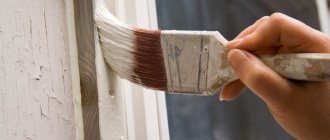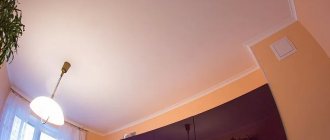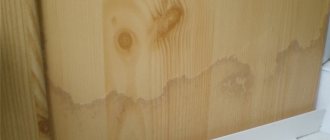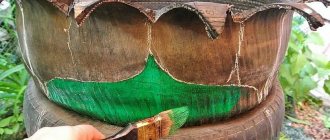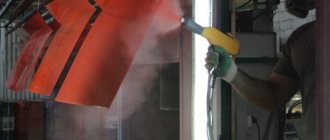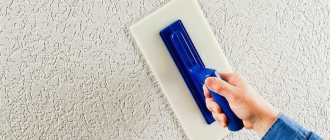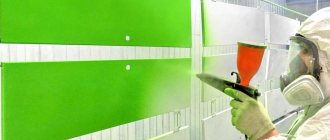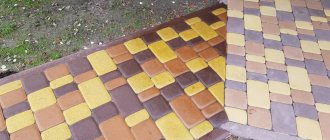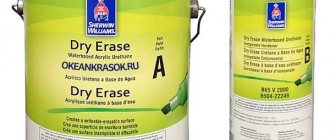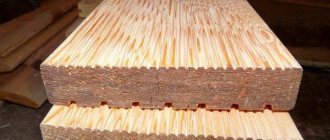Despite the popularity of plastic double-glazed windows, many homeowners prefer traditional wooden windows. Such structures, in comparison with plastic ones, have many advantages: they are environmentally friendly, safe, and most importantly – very durable. However, wooden windows require constant care. Over time, the paint layer and protective impregnations wear off and require replacement. The right paint for wooden windows will help maintain the color of the window frame and its integrity for a long time.
What paint to choose for wooden windows
Novice craftsmen often do not know what paint is best to paint wooden windows. The wood coating must have the following characteristics:
- increased resistance to moisture, pests and fungus;
- elastic structure that can withstand expansion from moisture;
- a breathable, porous surface that will allow air into the room.
These paint characteristics will not only extend the life of the windows, but also improve their performance. Knowing the characteristics of different materials will help you figure out which paint to choose for painting wooden windows.
Why do you need additional treatment for wooden windows?
Properly used primer for wooden windows has a great influence on the final result of painting the window, namely:
- This is how wood is treated with an antiseptic;
- the substances included in the special mixture prevent the development of fungal and mold microorganisms;
- the use of this stage of decorative and protective finishing of window construction allows you to reduce the cost of purchasing decorative products that protect wood from rain, sun, and high temperatures;
- the use of modern means allows for deep penetration of protective materials into the wood structure;
- modern technology for priming wooden windows provides for deep penetration of dispersed particles into the treated surface, which helps close the pores of the wood, in which air can accumulate, leading to the destruction of the paint layer (micro craters formed after painting);
- Penetrating into the wood, special dispersed mixtures envelop the fibers, making them tougher and more pliable for sanding.
Such an important role that this stage plays in the production technology of modern reliable and beautiful window structures raises a natural question - how to prime wooden windows - in containers, with a brush or by spraying? Treatment of wooden windows with a special composition in special tanks is possible only in industrial production conditions. To enhance the penetration effect and speed up the process, a vacuum is used. At home or when repairing an old window system, this method of processing is not realistic. This, however, is not a reason not to use this opportunity to enhance the protective properties of the glazing system. Modern materials make it possible to use the following methods of priming wooden windows:
- spraying;
- application with a brush.
The main question is not how to prime wooden windows in containers or in other ways, but rather the opposite - how to prime a wooden window before painting. Despite the large selection of mixtures offered, experts recommend giving preference to products from well-known brands that have gained a reputation in the market. In addition, wood processing systems developed by leaders in the production of paints and varnishes offer a comprehensive solution to the issue - from impregnations to reliable, high-quality, safe for humans and the environment, paints and varnishes. Reliable and long-term protection of wooden window systems from the aggressive effects of atmospheric factors, a beautiful appearance that will delight the owners - this is the result of using window covering systems produced by a trusted manufacturer.
Paints and varnishes for interior and exterior window decoration
Alkyd paints are usually used indoors. They have an elastic structure and give the windows an aesthetic appearance. The flexible structure of the coating is achieved thanks to oil inclusions.
For outdoor work, more durable coatings are required, such as acrylic and nitro paint. Such paints and varnishes dry very quickly, and they do not have a strong odor, and after drying, a durable film is formed on the window frame. However, paints are not suitable for window sills. You can figure out how to paint wooden windows only by taking into account the characteristics of different materials.
How to calculate the amount of paint
The area of window frames and sashes is calculated differently than the area of walls or ceilings. To avoid numerous measurements, additions and multiplications, special tables with conversion factors were developed - GESN-2001-15, paragraph 2.30.
Take window measurements to find out paint consumption
Calculating paint consumption
To make calculations, you need to measure the width and height of the window (along the outer edge of the box), multiply the resulting values to find out the area. In the table, find the required coefficient, depending on the type and number of frames, and then multiply it by the area of the window. Then everything is simple: multiply the paint consumption per m2 by the area of the surface to be painted and by the number of layers. This way you can roughly determine how much paint you will need for one window.
Universal paint
If you want to save money on painting wooden windows, purchase universal paints. Such coatings can be used for both interior and exterior work. Universal paints and varnishes include atmospheric glossy enamel.
When purchasing a coating, pay attention to its resistance to temperature changes and precipitation. In the realities of the Russian climate, it is recommended to use alkyd enamels and water-based acrylic coatings.
How is dyeing done?
If you choose a new painted window, its production takes place in production. But how does the work go if the windows are already there, and for a long time? Let's describe the whole process to clarify the situation:
- To begin with, you call a specialist, he takes measurements, advises you on choosing a color, calculates the exact cost of the service, and draws up a contract.
- At a time convenient for you, the master arrives for coloring. Checks the integrity of the system and repairs damage if necessary.
- Glass and trim are carefully protected from paint getting on them.
- The surface to be painted is degreased with a special solution and dried.
- Paint is applied to the prepared surface in two layers.
- The work is handed over and warranty service is issued.
All work takes no more than 2 days for large volumes of work.
Characteristics of various paints
In addition to the above coatings, oil, enamel and adhesive paint compositions are used to paint wooden windows. To decide which paint to use in your home, compare all the climate characteristics: humidity, precipitation and temperature differences. It is also important to consider the condition and type of wood being painted.
Polyurethane and acrylic coatings
Acrylic and polyurethane based paints are considered the most resistant to adverse conditions, especially moisture. Such coatings contain toxic organic solvents, which make the composition durable. Among these two types of paints, polyurethane paints are more durable and extremely wear-resistant, which is why they are recommended for use in exterior decoration. However, polyurethane paints have one drawback - high cost. In this regard, acrylic ones are inferior to them, which is why they are more popular among novice craftsmen. It is also important that acrylic coatings can be diluted with water and mixed with pigments to obtain complex shades. However, white paint is most often chosen.
Alkyd paints
Today, alkyd paints are increasingly being chosen. In addition to resistance to weather conditions, this type of coating has another advantage - it can withstand treatment with aggressive detergents and oils. The paint composition applied to the primed surface can last up to 5 years. Such paint can withstand temperatures from plus 60 to minus 50. This paint is good for application to coatings located outdoors.
Nitrocellulose window coverings
Nitrocellulose paints are also suitable for treating wooden window frames. The only feature that is worth remembering when using such coatings is the mandatory active ventilation of the premises during operation and drying. The paint contains acetone, which releases vapors after application. In addition, the paint burns very easily, so it should be stored away from sources of ignition. White coatings are very popular.
Increasingly, homeowners are coating their window frames with transparent compounds. Varnishes perfectly protect wood and allow you to admire the natural structure of the material. The composition of transparent varnishes is identical to alkyd enamels, with only one difference - coloring pigments are not added to the varnishes. Choosing such a material is the best solution if you want to preserve the texture of the wood. The main condition is that the selected material must meet the operating conditions.
How to choose paint?
Choosing paint for wooden windows
Considering that the window is an integral part of the apartment, which protects the room from atmospheric influences, the outside frame must easily cope with external factors, tolerate excessive heat or cold, not be afraid of high levels of humidity, etc.
Next, we will talk about which paint for window frames is best suited, and what points you need to pay closer attention to when purchasing it.
The paint must provide:
- resistance to high humidity and does not rot from the outside;
- wood's resistance to shrinkage and swelling;
- sufficient air exchange in the apartment.
A comparison table of the most popular paints for wooden windows is given below.
Article on the topic: Paintings for the interior - types, purposes, rules of application
| Type of paint | Paint characteristics |
| Water-based acrylic paint, odorless | It is highly resistant to moisture, can be used both outside and indoors, and is also perfect for further painting of gratings; has a vapor-permeable, breathable structure and a rich color palette; available in price and application; does not have a pungent odor. |
| Silicone resin paint | The paint is odorless and very similar to acrylic analogues; elastic; has a thick consistency; forms a glossy film; differs in dirt-repellent features. |
| Silicate water-soluble paint | Penetrates deeply into the wood structure; has no pungent odor; resistant to moisture and natural disasters; has a high level of adhesion. Fiberglass has antiseptic properties. |
| Polyurethane paint | Dries quickly; wear-resistant; frost-resistant; non-toxic; without smell; does not fade under sunlight. |
| Water-dispersion paint | Eco-friendly, quick-drying composition; does not fade or fade under sunlight; frost-resistant; amenable to tinting; odorless, can be used even in children's rooms |
| stain | Odorless; allows you to preserve the texture of the wood; unpretentious; easy to apply and dries quickly; does not form stains; has different color. |
Here are some practical tips from experienced finishers that will make your life easier:
- For DIY painting of a wooden frame, it is better to use oil-based alkyd paint. This is a more durable and elastic material, which has excellent decorative features and does not have a persistent odor. Purchasing such paint for the frame will save financial costs on painting window grilles, because this material can also be used for metal.
- “Repairing” the frame should be done in this way: for exterior work you should choose acrylic paint, and for interior work - alkyd. Using different paint compositions outside and inside the apartment, you can preserve the texture of the wood, and also paint window grilles in the future.
- You can also use a universal composition - atmospheric glossy enamel. This paint is equally good for both outdoor work on a wooden frame and for indoor work, because it does not have a strong, lingering odor.
Please note that the color of the frame depends on where it is installed:
- If the windows face the sunny side, choose a paint that is as light as possible. This helps to reflect the sun's rays from the surface of the wood, which is why it will not dry out quickly.
- If your windows are always in the shade, the outside can be painted with darker coloring compounds, but here it all depends on your wishes.
I would also like to mention such a process as painting plastic windows.
Related article: Stunning new items: curtains for the kitchen 2019
We are all accustomed to the fact that PVC windows only come in white, but this is absolutely not true. The coloring of PVC windows can be completely different, but if you once installed white frames, and after the renovation they do not fit into your improved apartment design, you should not even think about replacing them (unless, of course, you are completely satisfied with their quality). The PVC frame can be painted, but be careful, because not all paints and varnishes are equally good for this. If there is a great need for painting, think carefully about the whole process and acquire special materials and tools.
Do-it-yourself painting of wooden windows
Before processing a wooden frame, you need to understand that different species require different work:
- oak does not require moisture impregnation, but they need to be protected from woodworms and other pests;
- pine absorbs moisture well, so it simply needs treatment against water and pests;
- Larch, unlike oak and pine, is resistant to both pests and moisture, so it does not need impregnation.
It is recommended to impregnate any wood with fire retardants, this will increase the safety of structures.
Painting
The frame, despite its monumental appearance, is one of the most labor-intensive elements to repair. When painting, it is important to take into account all surfaces, even those hidden from view. It is important to understand that on the outside the surface of the product is regularly exposed to successive atmospheric precipitation, and on the inside to dry air. In addition, wood is a favorite place for insects to gather, as well as easily accessible material for fungus and mold. The external environment is designed to destroy the physical and external properties of wood, while paint can create a reliable barrier that prevents rapid wear and tear.
Painting tools
Before any work, you need not only to buy a high-quality coating, but also to prepare all the tools. If you don’t know how to paint wooden windows with peeling paint, start by preparing the surface. To do this, the coating is sanded and small nails, chips and other protrusions are removed. The working surface should be as flat as possible. For work you will need the following tools:
- pliers, cutters and other devices for removing screws and nails;
- spatulas and sandpaper to remove paint if it has peeled off;
- When disassembling, be sure to remove the glazing beads; to secure them after cleaning, you need a hammer;
- for small frames you will need brushes, for large ones you can use rollers;
- containers or cans for paint;
- To remove glazing beads, a nail puller is needed; it is also used to remove the sashes;
- You will also need putty and a spatula for it; the composition is used to treat dents and chips of old frames;
- antiseptic composition for wood processing;
- solvent for removing paint from brushes and glass.
When treating windows with acrylic paint, color or pigment is often used. With their help, you can give the composition the required shade; it is recommended to buy ready-made colors, since not everyone can do the tinting the first time. To find out what kind of paint to use on wooden windows, here are some tips and tricks.
Option 1. Painting a wooden window
Preparation for finishing
So, the first option that I will consider in this article is painting a wooden window. It is easier to work with a new design than a used one, so here I will describe in detail how old windows are painted. With new ones, everything is the same, but you don’t have to clean the product from paint.
With the sash removed - as in the photo - it is much more convenient to work
So, the algorithm will be as follows:
- Ideally, we remove the window from the window frame by dismantling the fasteners. In practice, this is done only for very light structures, while for others they only remove the sashes from their hinges. By the way, the hinges should also be dismantled - we’ll wash them off the paint and install them on a newly painted surface.
If you don’t want to remove it, at least unscrew the frames to access the space between the glasses.
- The next point is glass. Again, it is best to remove them from the frames (we will wash them on all sides at the same time), but this is not necessary. Below I'll tell you how to paint a window without staining the glass, so you can skip this step.
- Now you need to prepare all the wooden parts for processing. And here I am already adamant: the old paint must be removed! If this is not done, then the new decorative layer will look extremely sloppy, and its strength will leave much to be desired.
Before painting the frame, the old paint must be removed
- To remove old paint, I usually use a spatula - the flaking material is simply scraped off with moderate effort.
- If the paint holds tightly, then before removing it you should warm it up with a hairdryer: the temperature effect softens the polymer. The film and promotes its detachment from the wood base.
- If a hairdryer doesn’t help, you have to spend money. I apply a liquid or gel remover to the painted area (gel is better - it evaporates more slowly), cover the wood with polyethylene and wait as long as the instructions require. After this, I remove the half-dissolved film with a spatula.
Removing paint using a hair dryer
- After cleaning, I sand all areas with coarse sandpaper. I wipe the sanded frame with a damp cloth to remove wood dust.
- Then, using wood putty, I level all surfaces of the frame. I apply the composition using a spatula, filling all cracks and potholes and thoroughly smoothing the surface. After the putty has polymerized, I sand the surface with fine sandpaper.
Defects are eliminated using wood putty
- After completing the putty, I treat the frame with a wood primer with antiseptic components. By the way, if the putty does not adhere well to the wood, you can apply a primer before leveling: this will significantly increase the quality of the treatment.
Immediately before painting, you should think about protection from drops and drips. I usually work with a brush, so I just need to seal the glass around the perimeter with masking tape. But if you use a spray gun, then in order to avoid serious contamination, you need to seal the entire plane of the glass, and also cover the surface around the window with at least old newspapers.
Painting works
The painting technology does not contain any special secrets. We proceed as when finishing any wooden surface:
- First, prepare the paint: open the container, mix thoroughly, and, if necessary, tint until the desired shade is obtained. If during the mixing process an insoluble precipitate or films formed when the paint dries on the surface are discovered, filter the composition through a special filter or nylon stocking.
When adding color, mix the composition thoroughly
You should only strain the paint that you purchased a long time ago to remove sediment. If there are clots in a jar we just purchased, we return it to the store and demand that it be replaced with a high-quality composition.
- Then we pour a small amount of paint into a separate container and dilute it to a more liquid consistency (about 25%). This will allow the acrylic copolymers to penetrate deeper into the wood structure, which means the paint will adhere more firmly to the base.
- Using a brush or spray gun, apply the first layer. We try to distribute the paint evenly, without leaving unpainted areas, but also without allowing drips.
Finishing frames with a brush
- After the first layer has completely dried, apply the next one - and so on until the desired effect is achieved. When working with acrylic paints, I am content with two layers for dark shades, and three or four for light ones.
- It is worth painting the outside of window frames either with a composition for interior work, but with a large number of layers, or with a more durable paint. So, I mentioned alkyd enamels - they would be quite appropriate here, because when working outdoors the unpleasant odor is not so annoying.
Paint the bindings with a thin brush
When all the paint is completely dry, we put the window back together, install the hinges and hang the sashes. If the glass was removed from the frames during dismantling, we install them in place, sealing the installation location with sealant, and fix them with glazing beads. The glazing beads, of course, also need to be painted.
Helpful Tips and Tricks
It is very important to choose the right time for painting work, this will ensure excellent adhesion of the paint to the wood. It is optimal to paint windows on a warm, not very sunny day (as ultraviolet radiation destroys paint pigments). It is best if there is low humidity on this day. For most paints, the optimum humidity is less than 80 and the temperature is above 5 degrees, but even under these conditions the coatings dry perfectly.
It is not recommended to apply paint to a new frame that has just been purchased, or to a product that is wet from rain. This will cause the coating to bubble, which will peel off after drying.
Advice! It is better to paint wooden windows from the outside. Thanks to this, you can keep the room clean.
Also, the paint can peel off due to a poor base and unfavorable indoor conditions. It is recommended to carry out wet cleaning to remove dust and dirt at the place where painting will be done. You should also learn how to remove the old coating.
Recommendations for high-quality window painting
- Be sure to remove all peeling or cracked paint from the window.
- The cracks must be carefully covered, and then the surface must be sanded with sandpaper.
- It is recommended to coat the surface of the wood with a primer.
- Be sure to properly dilute the paint with a solvent.
- The paint must be applied to the surface of the frame very carefully.
- It is recommended to apply paint in several layers.
- To avoid the tedious procedure of cleaning windows, which is very often required after painting windows, you can cover the window glass with special paper tape and newspapers before painting.
Method for removing old paint
Before applying the coating to the old frame, you need to remove the first layer of paint; to do this, use the following technology:
- The window frame is heated with a hair dryer or blowtorch. A layer of coating that is not very old will quickly begin to bubble, which will allow you to remove all the paint with a spatula. If this method does not work, you will have to soak the frame with solvent and remove the paint with scrapers and spatulas.
- It is important to prepare the frame itself; it should be smooth and easy to close. If there are problems with slamming, it is necessary to grind off the unevenness that prevents closure. For such work, grinding equipment is used. Cleaning the coating is done carefully, otherwise the wood layer may be damaged.
If you cleaned the paint with a solvent, be sure to thoroughly dry the frame after the procedure.
To understand how to clean wooden windows from old paint, you should use not only solvents, but also special liquids for removing old coatings. Similar substances can be purchased at a hardware store. To remove paint, apply liquid to the surface and wait until the paint turns into lumps. The resulting mass can be easily removed with a spatula or a stiff brush. This cleaning will ensure ease of subsequent work.
How to paint a window, preparation
How to paint a wooden window with your own hands so that you don’t have to repeat the procedure again in a year? Without preparatory work, it is impossible to paint windows efficiently.
It is important to choose the right day to work. Strongly scorching sun or, conversely, wind and rain will not have the best effect on the final result. Under the wrong conditions, the paint will begin to crack, peel and peel, so everything will have to be repainted.
Removing old paint
Before painting old wooden windows, it is necessary to remove the old layer of paint from the frame. To do this, use a scraper and sandpaper. If the layer does not want to peel off, you can connect a grinder or drill with a special attachment to the process. The cleaning procedure must be carried out very carefully so as not to damage the wood. For ease of operation, it is better to remove the fittings from the window or seal them with masking tape, and dismantle the structure itself and place it on a horizontal surface. It is also better to seal the glass with tape around the perimeter at the junction of the glass and the frame, retreating a couple of millimeters. This will allow the paint to penetrate deep into the joint and not leave bald spots.
If you don’t have much time to paint, you can purchase a special paint remover. This way the work of removing the strict layer will go faster.
After the old paint is removed, the frame is carefully inspected for defects. If there are any, they must be eliminated. To do this, the surface is sanded with fine sandpaper. The serviceability of the mechanisms of handles, hinges and bolts is checked. With each repainting, the glazing beads that secure the glass are replaced with new ones. They are painted separately and installed ready-made on the windows. Areas of the frame that have been affected by fungus or rot need repair or replacement.
Surface putty
The next stage of preparation is putty. It will help fill microcracks on the frame and level its surface after grinding. It is better to use the same putty for oil paint, and acrylic for all others. The window is first cleaned of dust and, if necessary, dried with a hairdryer. Apply an antiseptic and wait until it dries. The putty layer is applied with a rubber spatula, carefully leveling the composition over the surface. If the damage is deep, then the paste is applied in several layers of no more than 3 mm with an interval of 2-4 hours.
Putty is one of the stages of painting a window
If the wooden frame is made of softwood, resin may appear on the surface. The paint then adheres poorly, and the varnish will not stick to the wood at all. Additional processing required. Small areas with resin are easiest to cut out with a sharp knife and seal with putty. If the drip area is large, you need to use any solvent, for example, white spirit. There may be metal elements left on the frame that cannot be removed. They are treated with metal putty. After the entire frame has been plastered, they go over the surface again with a sander and clean the window from dust. The clean and dry window is examined from all sides and, if necessary, the puttying process is repeated again.
Wood window primer
The final preparatory stage is priming. This is an intermediate layer between the paint and the surface of the frame. It is necessary to protect the wood from external influences and better adhesion of paint to it. To avoid having to degrease the frame later, choose a primer with this function. After application, the product forms an invisible protective film on the surface, which provides protection from insects and rot, as well as maintaining an optimal moisture balance.
Preparing a window for painting
In order for the frame to look neat after applying paint, it is necessary to remove all fittings, the doors themselves, and protect the glass before painting. If latches and hinges are faulty, they are repaired and replaced. Locks and handles that cannot be removed are simply wrapped with masking tape to protect them from paint. This will avoid unnecessary cleaning.
In addition to fasteners and handles, glass sheets also need to be prepared for painting. Most often, white paints and varnishes are used for coating, which after drying are very noticeable on the glass. Therefore, even before mixing the paint, the joints of the frame and the glass are sealed with wide masking tape on both sides. For novice craftsmen, it is better to cover all the glass with newspapers. We paint the frames carefully so as not to create unnecessary work for ourselves.
Note! The adhesive tape is not attached to the frame tightly, but with an indentation of 1.5-2 mm. This distance will allow the paint to penetrate into the cracks of the frame, thereby protecting the wood from destruction and from moisture accumulation.
It is not recommended to use old glazing beads for glass on old frames. Such structures wear out quickly, so it is better to replace them with new ones. To prepare, new glazing beads are sanded, coated with primer and paint. After drying, they are nailed to the frames. We choose high-quality coating materials so that after a while we do not have to replace some elements with new ones.
Window cleaning and inspection
You cannot apply paint to old windows without preparation, otherwise it will lay down in an uneven layer, and after 2-3 months it will be covered with a web of cracks and bubbles. 1-2 days before painting, the frame should be washed, which will remove dust, small debris, and insects. To clean, use a soft sponge or cloth, a weak soap solution, or special products designed for wooden surfaces.
After washing, inspect the windows for damage. You should be alert to cracks, chips on the glass panel, as well as broken fittings or deformation of the frame, as a result of which condensation accumulates inside the wooden window, a draft appears, and sound insulation is compromised. In this case, it is worth inviting a specialist who will eliminate the defects, otherwise the window will not last long.
Why do you need putty?
Adherents of old technologies use a mixture of rosin, wax and turpentine for priming. Today, such compositions have become obsolete and are rarely used. Construction departments are full of a variety of primers, putties and other compounds intended for painting. Most often, acrylic materials are used to prime the surface of wood. Applying putty includes the following steps:
- The frame is inspected for damage. If metal parts are worn out or have cracks or areas of rust, they are treated with a metal primer.
- Before applying the primer, the surface of the wood is impregnated with an antiseptic. This measure will protect the array from beetles and rot, which will significantly extend the service life of the structure.
- After applying the antiseptic, the frame is re-inspected. Antibacterial impregnation will not cover serious cracks and chips; these are the ones that need to be covered with putty. The procedure is performed in stages, filling the cracks over and over again. If you put a large layer of material on the wood, it will fall off along with the paint.
- If the cleaned window frame is planned to be painted, then the putty is applied in a middle layer (the material will not be visible under the white paint). For processing under varnish and stain, the putty is tinted to match the color of the solid wood. You can also make your own putty composition from epoxy resin and wood fibers.
- First, apply the composition on the chips in one layer and wait for it to dry. After this, the layer is cleaned of nicks and protrusions.
- After drying, apply a second layer and also clean it.
- The procedure is carried out until the frame becomes level.
Note! Before applying a primer for a specific coating, the surface is degreased with a solvent. It is recommended to apply the primer with a roller as this provides a more even surface.
Applying putty and primer
DIY window painting
The priming and puttying stage looks like this:
- With your own hands, coat all metal products that may corrode with metal work primer.
- Next, you need to use antiseptic substances that should be used to coat the tree - this will protect it from rotting.
- Fill all kinds of gaps, cracks and other defects. But, be careful not to overdo it with a layer of plaster, because too thick sections may fall off. To do this, you can use putty, which is intended for woodwork; it is based on acrylic. If you do not want to use paint, but decide to make do with stain, first paint the putty in the same shade so that it does not bleed through.
- After applying the putty and drying it, the surface is cleaned with sandpaper, then the remaining dust is removed and the evenness is checked.
- Then it's time to prime. To do this, you can choose a primer together with an antiseptic - 2 in 1. The primer forms a transparent protective film on the surface, which does not interfere with the preservation of the natural wood grain. Also, the primer does not allow the frame to rot even when exposed to high humidity. But before applying primer, it is worth degreasing the surface using white spirit.
Related article: How to install a wooden frame under drywall
Painting the frame in several layers
After puttying, the frame becomes smooth, which means the paint will lie evenly. To ensure that the coating has a dense surface, a multi-layer application method is used. Painting is quite simple:
- the working surface is cleaned of dust and dirt so that the fresh paint does not form lumps;
- the composition is opened, mixed and filtered through a fine mesh.
Some craftsmen apply paint from a can to the prepared coating, which is highly not recommended. As a rule, various coating materials are sold very thick, and a thick film of paint and solvent forms on their surface. When applied, this composition produces a thick layer that will drip down and form thick accumulations of paint. Such a coating will not look aesthetically pleasing, and will quickly crack over time.
It is not recommended to pour the entire jar into the dilution vessel. Add a little paint to achieve the desired consistency. You should not choose the solvent yourself; ask a consultant about what composition is recommended for this coating.
The first layer of paint is made liquid so that it penetrates into the structure of the array. Before applying a second coat of coating to an already painted surface, the first one must be completely dry. The third layer promotes adhesion to wood. For two finishing layers, the composition is made thick to prevent drips. If drops and accumulations of paint form, they are removed with a cloth with a solvent. You should not wait for the drips to dry; they quickly harden and spoil the appearance of the entire frame.
When painting a window frame, the brush is lowered into the vessel only halfway. This will protect the instrument from the formation of excess and constant leaks. Coating begins on the side that faces the street.
Note! It is best to work with several brushes of 3-4 sizes. To cover a large area, use a thick one, and for difficult areas use a small one, a couple of centimeters wide.
Window frames are painted with a flat brush; it creates a flat and even stroke. To ensure an even line, place the brush on top of the frame bar and release it, allowing the brush to move under its own weight. Under the force of gravity, the tool draws a smooth, almost perfect line.
After completely painting the window, you need to wait until the frame is completely dry. Only after the coating has completely dried is the protective tape removed. It is worth remembering that before work you should remove the paint from wooden windows.
Once you become familiar with the features of different coatings and application rules, you can paint the windows yourself without the help of specialists. When choosing a coloring composition, you should correlate its characteristics with the operating conditions of the coating.
Recommended Posts
Finishing a window with siding yourself + video
How to insulate plastic windows
Beautiful tulle for the kitchen + photo
DIY window bars + photo
How to make a window out of wood with your own hands + drawings
Which windows to choose for a bath
Option 2. Painting a plastic window
Preparatory work
The question of whether it is possible to paint plastic windows is still considered controversial. In principle, PVC products are not intended for re-painting, but they, despite all the properties of the material, lose their attractiveness over time.
The profile turns yellow, its surface loses its shine, stains, stains, scratches appear on it... in general, “something needs to be done”!
From my point of view, the question of whether it is possible to paint PVC windows can be answered positively with some reservations:
- firstly, as a result we still won’t get a perfectly smooth surface, so painting is quite a compromise solution;
- secondly, the quality of the finish directly depends on the materials used and the quality of surface preparation.
This composition is quite suitable for updating a plastic window.
I will focus on preparing the window for painting in as much detail as possible:
- At the first stage, we remove the sashes from their hinges and remove all removable elements from the window - linings, handles, additional fittings, etc.
- We clean the frame and sash profile from dirt by wiping it with a damp sponge.
- Carefully degrease plastic surfaces that will be painted. When degreasing, we pay close attention to the choice of solvent: it is very important that it does not react with PVC.
We carefully degrease the profile
- We wipe the degreased structure dry, and then treat the surfaces with fine sandpaper. We need to make the plastic matte without scratching it.
- After sanding, wipe all surfaces dry again, simultaneously removing plastic dust. I would degrease again - this step definitely won’t be superfluous.
- Immediately before painting, we protect the glass unit, fittings and seals from pigment by sealing them with masking tape or covering them with plastic film.
If you use a spray gun, then you need to close not only the double-glazed window, but in general everything except the surfaces to be painted.
Application of primer and paint composition
When restoring the appearance of plastic windows, I am guided by the following scheme: prime with a brush, paint with a spray. This approach allows you to achieve maximum quality of the coating, while primer for plastic can be applied with a brush, saving time and effort on fussing with a spray gun.
Applying paint indoors
We work like this:
- First, apply one or two layers of primer to all surfaces. Between approaches we take a pause necessary for the soil to polymerize.
- After the primer has dried, we move on to painting. We apply the pigment using a spray gun, spraying the first layer to form the base coat.
- When the first layer of paint has dried, repeat the procedure. At the same time, we need to form a perfectly homogeneous surface, while simultaneously correcting all the shortcomings of the first layer.
- The number of layers is determined by the hiding power of the paint. Sometimes a light base appears under the dark pigment, so before painting plastic windows brown, it is worth checking how the paint will behave.
Spraying outside
We protect painted structures from wind, precipitation and mechanical influences during the entire period of paint polymerization. You should be especially careful about dust and microscopic hairs: they stick to fresh paint and can greatly spoil the appearance of the window.
Applying powder pigment to an aluminum profile
Aluminum windows are painted using approximately the same scheme, only the paint, of course, is taken accordingly. Ideally, aluminum pigments are used to decorate an aluminum profile, but, alas, they can only be applied in special chambers...
Features of the process of painting wooden windows
Experts say that it will be much easier and safer to work if the wooden window is removed from its hinges and placed on a wide, flat surface. If there is not enough space in the house, then the Euro-window can be painted by first placing it on a staircase or scaffold, that is, driving two nails into the support (a “hundredth” is enough) at a height of about 1 meter. After this, it is enough to install the edge of the euro-window on the driven nails, and the structure will hold well.
If the sliding window was not removed from the opening in advance, then during the drying of the paint it is necessary to repeat the cycles of raising / lowering the window sash several times. Otherwise, when the paint that gets into the grooves dries, the recesses and protrusions necessary for the movement of the sash may stick together. As a result, the wooden window will be difficult to raise and lower.
The paint must dry for at least six hours. During this time, it forms maximum adhesion to the surface of the wood, thanks to which it can protect it for a long time from the destructive effects during operation. Before the paint dries completely, remove the masking tape from the glass unit.
Painting technology
The above process cannot be started without a general cleaning of the premises. Exactly. Before you begin painting, it is important to eliminate any accumulation of dust. Having completed all the preparatory work described above, you can begin painting. Among the huge range of paints and varnishes, we recommend paying attention to the following manufacturer names: Deluxe, Caparol and Remmers. These brands have confident indicators of quality, durability and durability. Regardless of the choice, any paint must be stirred before application. To apply the first layer, the paint is diluted with a solvent. Such a lightweight composition will lie easier and better on the surface of the wood and cover all microcracks and irregularities. Subsequent layers may be thicker. The number of layers depends on whether you have achieved the desired result in terms of color and quality of the finishing layer. Repairing a wooden frame is fairly easy to do yourself. It is important to follow the recommendations of specialists and take your time during the work process. Painting the frame increases its service life and also gives it new decorative properties. As practice shows, there is no universal cost for such repairs. It all depends on the condition of the structure and the selected consumables. You can meet both 1000 rubles and 10,000 rubles.
